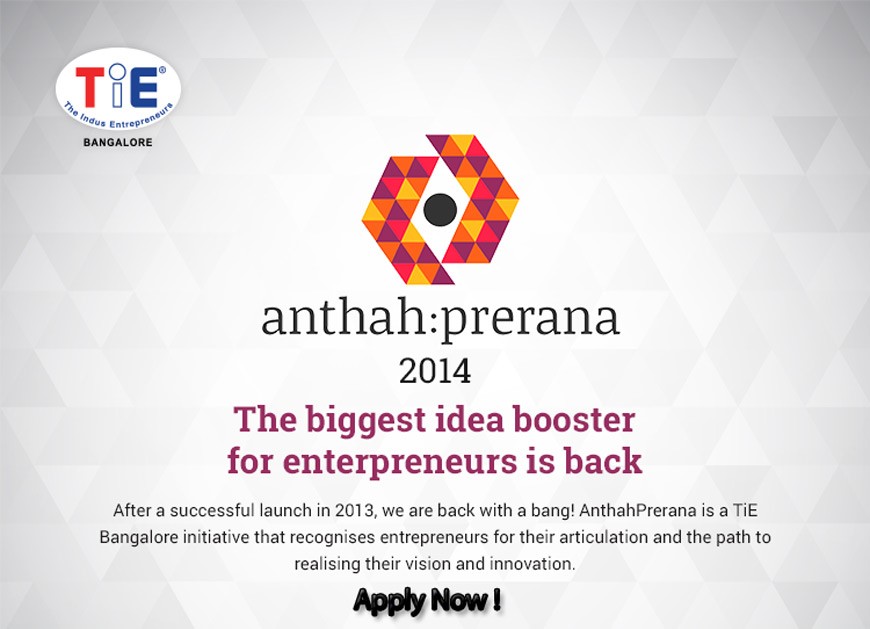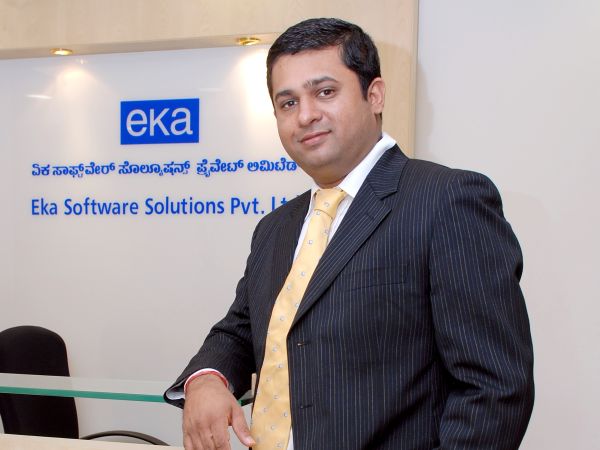I am a great fan of analogies and for software products that we make, I always try to get an analogy as we grow through the journey. In a recent post I had shared the medical analogy of classifying how software products can be classified as vitamin, pain killer or vaccines.
One of the favorites for we Indians is cinemas, whether hindi or tamil or telugu, and here is another analogy I would like to share connecting the world of software products – with world of cinemas. We all set out to make a hit, a Sholay !
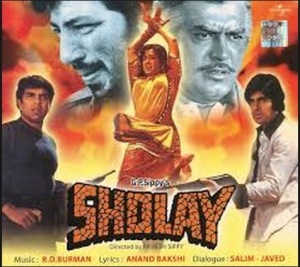
Now let’s discuss what we would need to make, a Sholay:
Place – First thing, choosing the place to make it is very important. In movies, the destination is Mumbai and most of the folks who aspire for film career move to Mumbai, and the next best destination is Chennai for south indian movies. Bollywood gains its name from its global cinema hub – Hollywood in California.

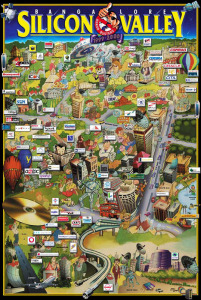 For software products, destination is Bangalore, where many across the country migrate for an aspiring career in software, considered as silicon valley of india. Especially with the software product startup momentum, Bangalore is certainly the place for the ecosystem. Other locations such as Hyderabad and Pune are the other smaller hubs catching up in this front. In the global context, its bay area or seatle in US, the land where amazing software products have been made or being made.
For software products, destination is Bangalore, where many across the country migrate for an aspiring career in software, considered as silicon valley of india. Especially with the software product startup momentum, Bangalore is certainly the place for the ecosystem. Other locations such as Hyderabad and Pune are the other smaller hubs catching up in this front. In the global context, its bay area or seatle in US, the land where amazing software products have been made or being made.
So if you are a startup, start to think and put a lot of importance for where you want to operate. These days Govt. policies also is an important factor for you to seek help for building the products
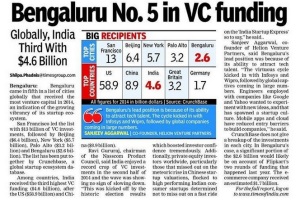
But the main consideration for choice of the place is offcourse the talent and the people, and the people who are willing to invest. In a recent article, India and Bangalore took places in top 5 global destinations for VC funding
People
Analogy gets interesting here, as there is always a belief that people with best coding skills can get out successful product. And it’s the same perception with movies where many think a Shah Rukh or Rajinikanth or other actors/actress are all about for the success of movies. But over the years, directors, screenplay writers, music directors, cameraman and many others who are behind the scenes have carved a name and gained significance for success of the movies.
Here is a fun way to connect the who’s who of movies to that of software products, as the goal is here is to establish the fact that “The Team” of people wins it all
Actors – Developers: Whatever is visualized or conceived, comes to life only when actors actually perform the way it should come through. The actual delivery or execution is completely based on what/how these people (actors or developers) really do it. Some actors do it in one shot, some need more shots, understanding the full picture and working with other co-actors. Same is the case with developers who can understand the full picture and do their parts well.
Cameraman – Designer: Camera men give shape to the movie that gives a visual appeal. This is a key ingredient and skill for success of the movie. Same is the case with Ux designers who really depict how the product should work and interact. Even the best of scripts and stories will not make an impact without a visual impact. 
Producer – Business Sponsor or Venture Capitalist : These are the guys who put the money. They determine how big or small the movie or product can be. They also reap the benefits of the business success of the movie or product. Production houses in cinema are equivalent of companies or venture capital firms. 
Editor – Quality Assurance : Movies are made to great lengths, probably for a 2 hours movie, there are many hours made of movie that gets produced. But this gets edited to capture the key parts, making sure the movie comes out in best quality to capture the story and screenplay. In product development context, quality assurance does a similar function of testing and providing suggestions to cut the irrelevant. Especially when different pieces of the product are integrated and tested, it exactly resembles editing. 
Media & Promotions – Product Marketer : Trailers, promos are very important in exciting movie buffs to get attracted to particular movie. Especially when there are several options and competing movies releasing around the same time, its important to do the right promotion focused on the right audience. Same is the case with products, while you may have the best products, if its not marketed well, you are bound to miss getting the attention. In the current world promotions needs to be across multi-channels. 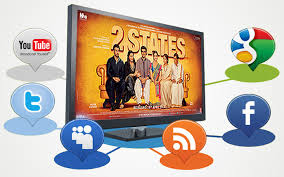
Screenplay – Architect: Screenplay is exactly what defines the “how” part of the movie and all the details. Few times this is done by the same person who directs the movie, but is different in most cases. Architect defines that in product development. He works on the how part to realize and lays out the path to realizing the same. 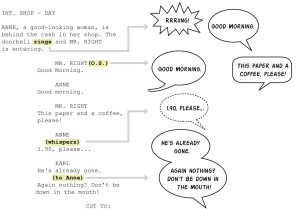
Story & Director – Product Manager : Director in movies is central orchestrator and often the guy who has the real vision of what he or she is making, works to get best out of different available talent and gets involved in every aspect of the movie. Product manager does this role in product development working with different stakeholders – and key person responsible for success or failure of the movie or product. In case of startups, typically founders dawn this role.
Movie Critics – Analyst: When the movie is out, there are several critics who provide rating, comments and reviews about the movie. They are key influencers that bring audiences to theaters. Now with social media we see every one becoming a critic or reviewer. In case of products, there are several analyst out there who review and provide comments on the product.
Movie Audience – Customer/Market: And ultimately the audience to the movie or the customer of the product consumes and provides their feedback, they are the voice to propagate it to wider (references in case of products). There are different types of audience and the tastes differ significantly based on demographic, motivation, interests etc. Also there are categories of markets for movies – A,B, C city audience whose tastes vary. There are movies that are made in keeping what audiences want and some other movies are made which audience may dream. Products also go through the same evolution, some are made based on current customers’ needs and some are made for the future that customers get wowed, some works well in developed markets, some better in emerging. 
Each of the above persons may go onto do one of the other roles, or remain as experts in their area. The people associated to a movie or products are emotionally attached to it forever. Usually startups have founders and few people doing multiple roles in the beginning.
Product
The movie – The product
Finally the product – the movie is the output. It can be a huge success or failure. It can appeal to some audience and may not appeal to others. There are few that appeal to everyone. Some become classics, some are short term flicks, some stay for eternity as best sellers. Same is for products.

Sequel – An interesting point about the market is like in movies where we have seen sequels of successful movies remade with a new flavor, we see the same with software products where hit products get remade with a different theme. And always the original ideas or themes has always a value, but sequels also have good market.
Even if you don’t have all the skills, its necessary you have to get the necessary skills beyond just development to make a successful one
Are your ready in the right Place, with right people and to make that thumping hit product for right market ?
Thing Big, Think of Making a Sholay !!!





 For software products, destination is Bangalore, where many across the country migrate for an aspiring career in software, considered as silicon valley of india. Especially with the software product startup momentum, Bangalore is certainly the place for the ecosystem. Other locations such as Hyderabad and Pune are the other smaller hubs catching up in this front. In the global context, its bay area or seatle in US, the land where amazing software products have been made or being made.
For software products, destination is Bangalore, where many across the country migrate for an aspiring career in software, considered as silicon valley of india. Especially with the software product startup momentum, Bangalore is certainly the place for the ecosystem. Other locations such as Hyderabad and Pune are the other smaller hubs catching up in this front. In the global context, its bay area or seatle in US, the land where amazing software products have been made or being made.










